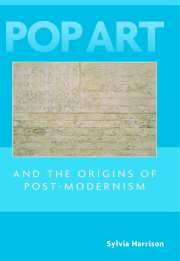Introduction
Published online by Cambridge University Press: 23 July 2009
Summary
This study is based upon the retrospective and now widespread identification of American pop art of the sixties as an expression of post-modernism. More specifically, this identification concerns New York pop, the form associated with the leading centre of art in both America and the world during this period. The immediate stimulus for this study lies in the question: Did the post-modernist art of American pop art in its initial form in the sixties give rise to a corresponding critical consciousness? In other words, can critical responses to pop during this same period also be retrospectively identified as post-modernist? This question determines the central task of this study: the recognition and establishment of the nature of post-modernist features in the critical consciousness generated by American pop art during the sixties. The retrospectivity of this endeavour should be stressed. What is offered by this work is a comparison between the ideas of a select group of American critics writing in the 1960s in response to the challenge of pop art, ideas that bear a striking similarity to that body of thought and opinion that is now associated with post-modernism. Hans Bertens's history of post-modernism, published in 1995, provides a precedent for this study's retrospective argument.
- Type
- Chapter
- Information
- Pop Art and the Origins of Post-Modernism , pp. 1 - 8Publisher: Cambridge University PressPrint publication year: 2001



